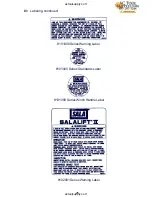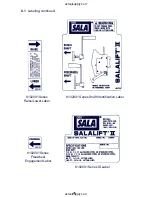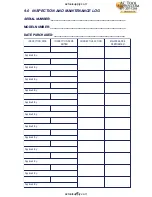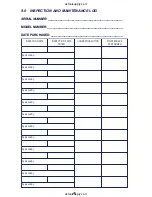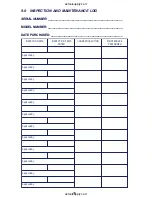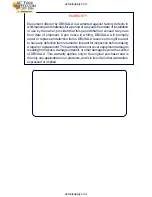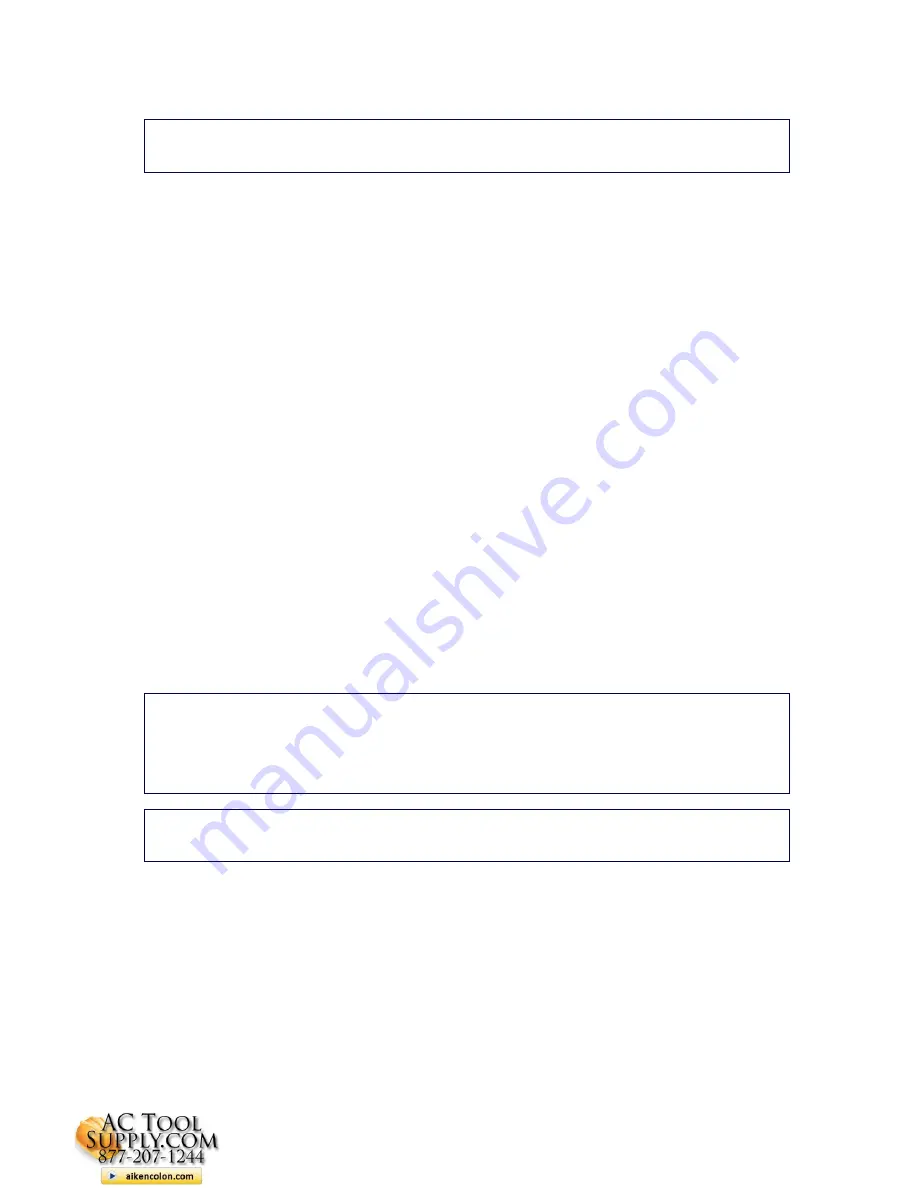
17
User must also be aware of the operating characteristics, application
limits, and the consequences of improper use of this equipment.
IMPORTANT: Training must be conducted without exposing the trainee to a
fall hazard. Training should be repeated on a periodic basis.
5.0
INSPECTION
5.1 FREQUENCY:
• Before Each Use: Visually inspect per steps listed in sections 5.2
and 5.3.
• Monthly: A formal inspection of the winch should be done by a
competent person other than the user. See sections 5.2 and 5.3 for
guidelines. Record results in the inspection and maintenance log in
section 9.0.
• Annual: It is recommended that the winch be serviced by a factory
authorized service center or the manufacturer. Extreme working
conditions may require increasing the frequency of inspections.
Annual servicing shall include, but not be limited to, an intensive
inspection and cleaning of all internal and external components.
Failure to provide proper service may shorten product life and could
endanger performance.
• After An Impact: Inspect entire winch according to section 5.2.
WARNING: If the winch has been subjected to impact forces, it must be
immediately removed from service and inspected. If the winch fails to pass
the inspection, do not use. The equipment must be sent to an authorized
service center for repair.
IMPORTANT: Extreme working conditions (harsh environment, prolonged
use, etc.) may require increasing the frequency of inspections.
5.2 GENERAL INSPECTION STEPS FOR ALL WINCH MODELS:
Step 1. Inspect all screws, bolts and nuts. Ensure they are securely
attached and tight. Check to see if any bolts, nuts or other
parts are missing, or have been substituted or altered in any
way. Inspect covers, housings, guards, etc. Ensure they are
free of cracks, dents, or other damage.
Step 2. Crank handle must lock positively onto the shaft and be free of
cracks, bends, or other damage.
actoolsupply.com
actoolsupply.com























